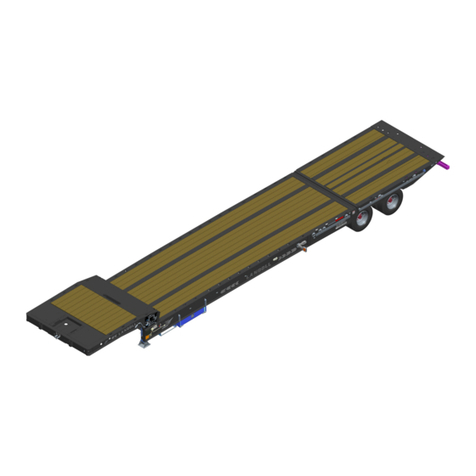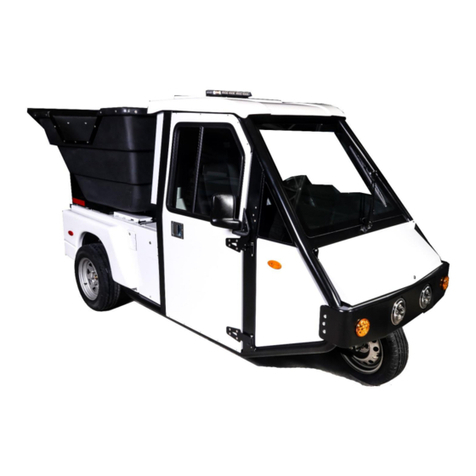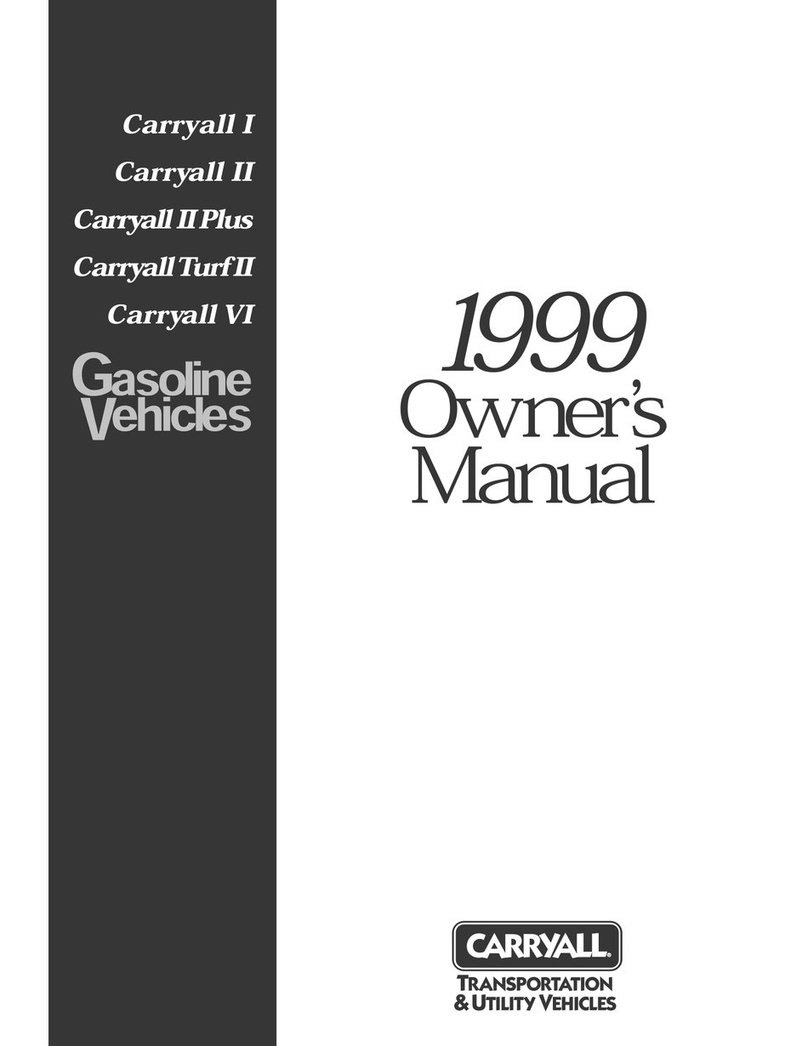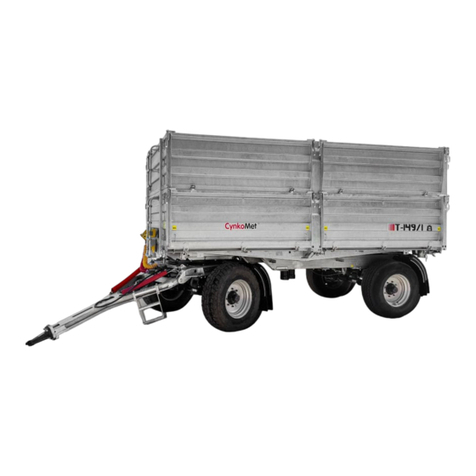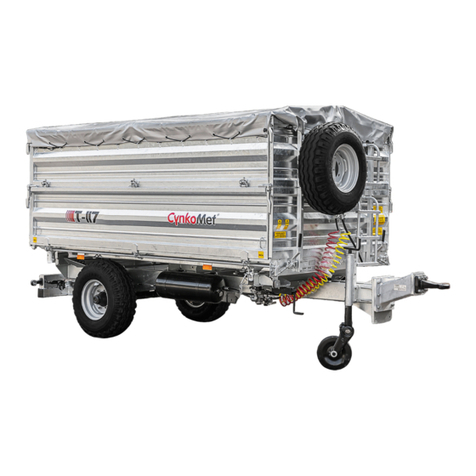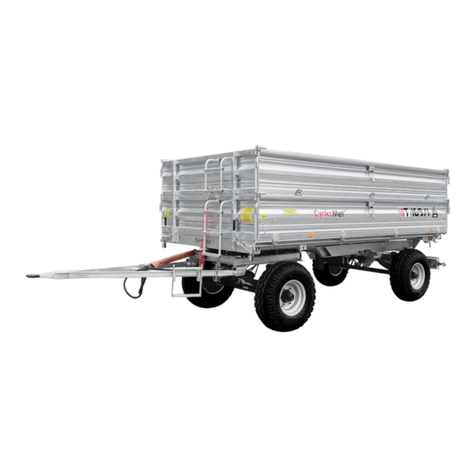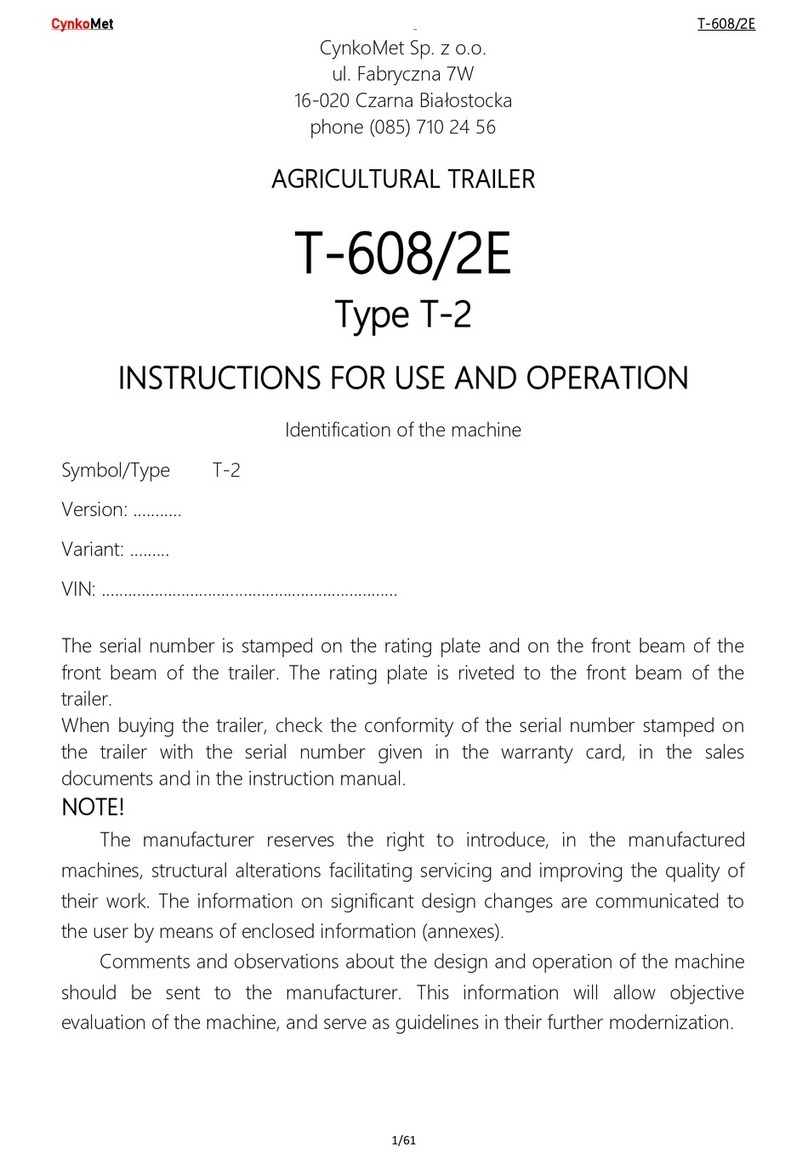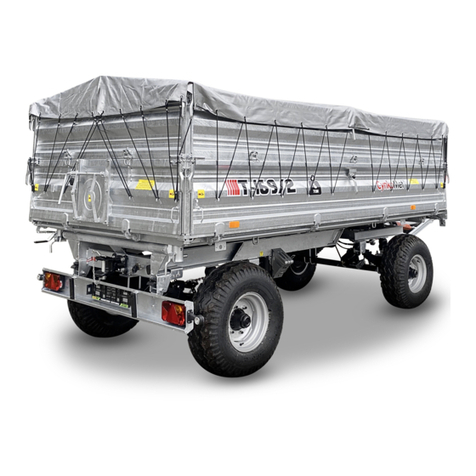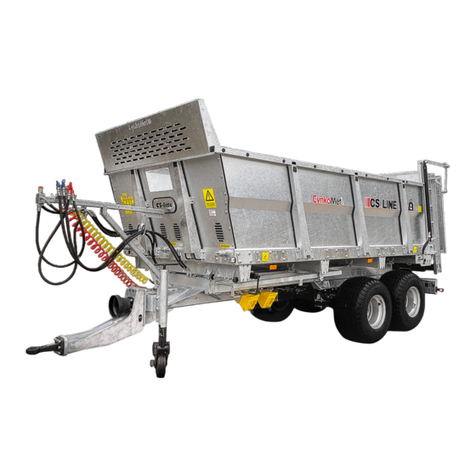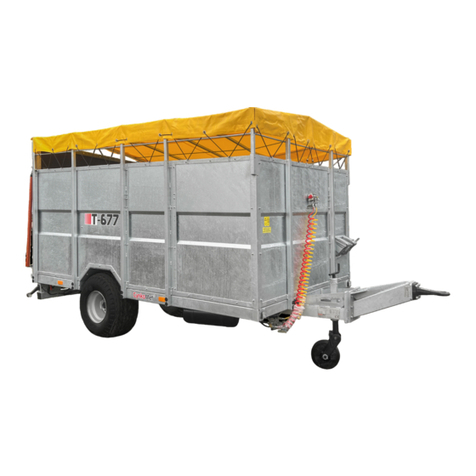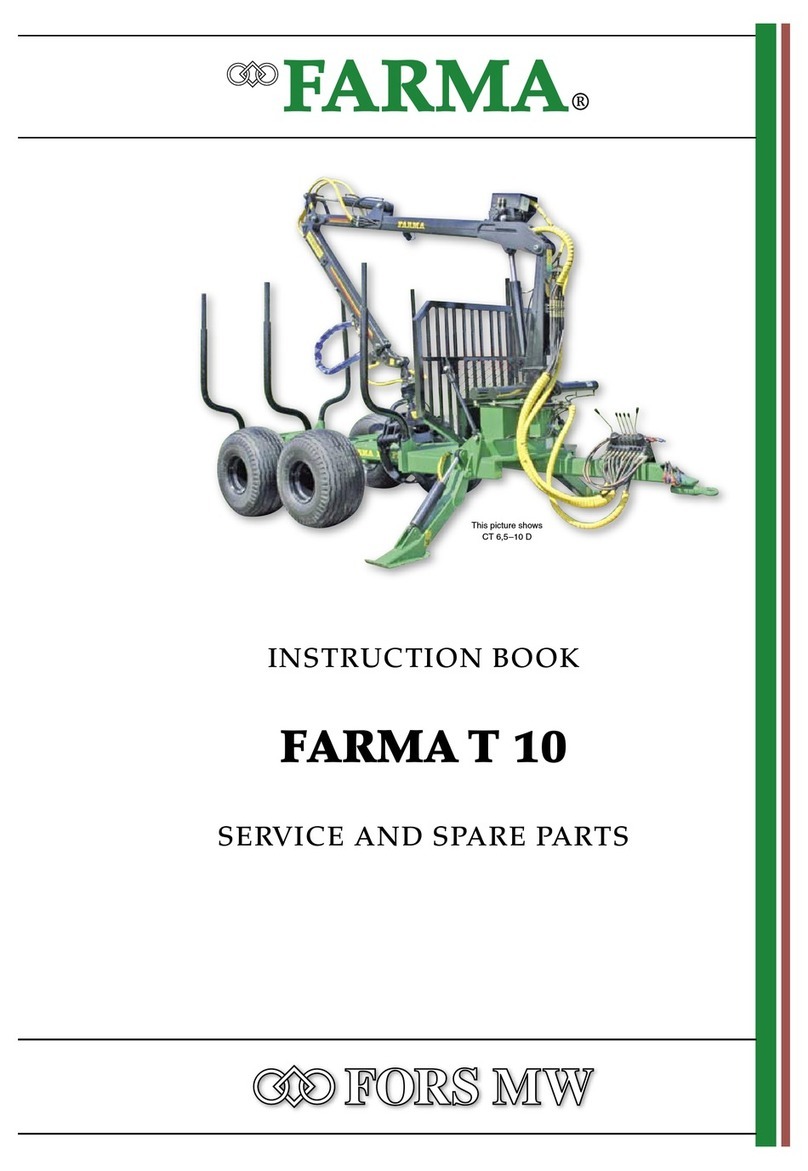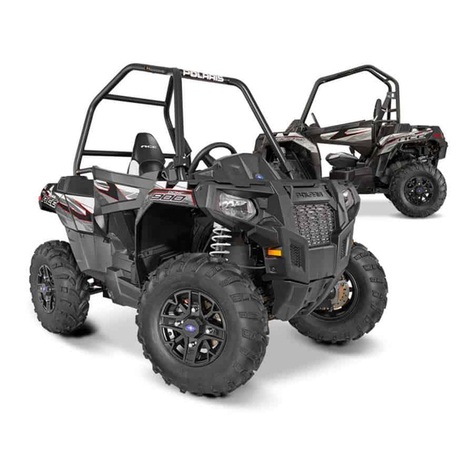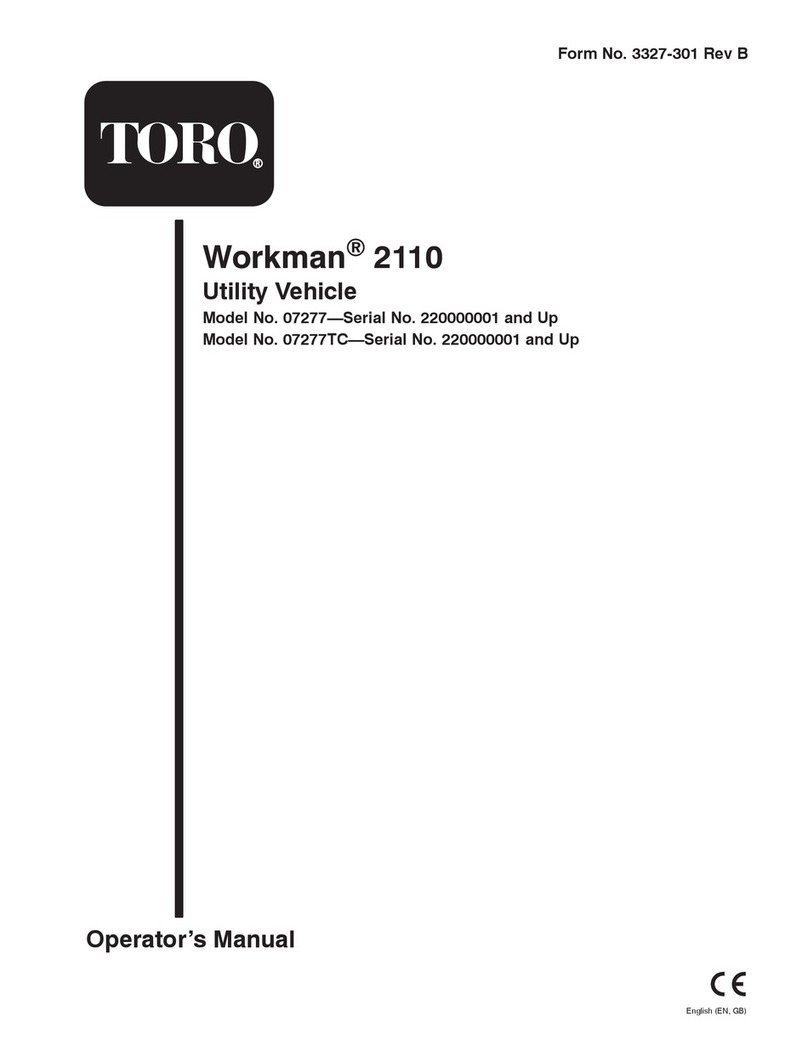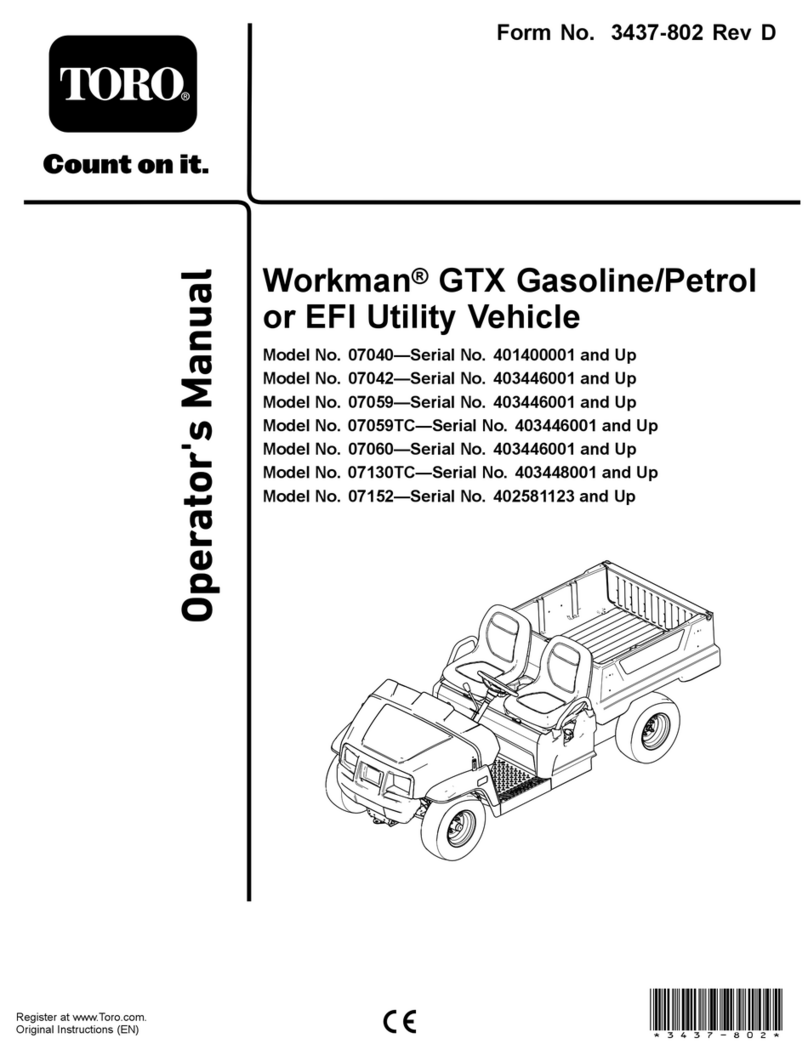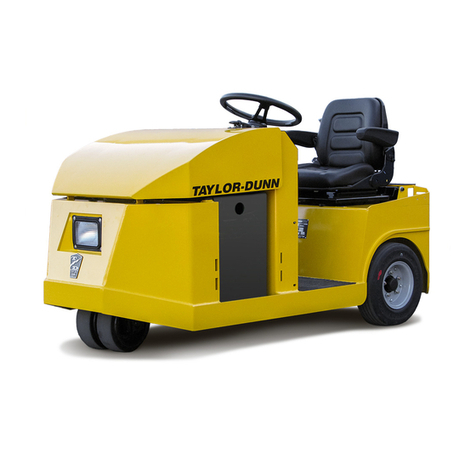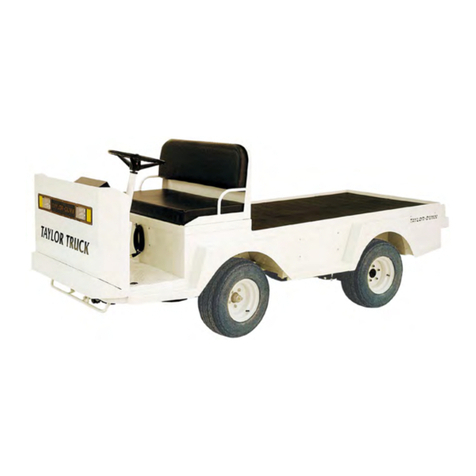CynkoMet T-104/4
T-104/5
Page 5
Table of contents
1. Introduction ............................................................................7
1.1 Identification of the machine .....................................................................8
2. Purpose of the trailer..............................................................9
3. Safety in use..........................................................................11
3.1 General safety and accident prevention regulations..........................11
3.2 Attaching and detaching the machine to the tractor........................13
3.3 Attaching and detaching the second trailer ........................................13
3.4 Road wheels .................................................................................................14
3.5 The pneumatic and hydraulic system....................................................14
3.6 Maintenance.................................................................................................15
3.7 The principles of movement on public roads......................................16
3.8 Description of residual risk. ......................................................................18
3.9 Residual risk assessment. ..........................................................................19
3.10 Information and warning stickers. ......................................................... 20
4. Information regarding use....................................................24
4.1 Technical characteristics........................................................................... 24
4.2 Description of construction and operation. ........................................ 25
4.2.1 Chassis ..................................................................................................... 25
4.2.2 Loading crate ........................................................................................ 26
4.2.3 The hydraulic installation of the lift ................................................. 28
4.2.4 Brake system ..........................................................................................31
4.2.5 Electrical installation, lighting and signaling............................................ 34
4.3 Rules of proper use of trailers. ................................................................. 36
4.3.1 Preparation before running for the first time................................ 36
4.3.1.1 Control of the trailer after delivery................................................ 36
4.3.1.2 Preparation of the trailer for the first connection..................... 37

